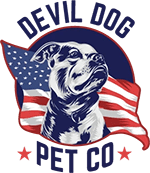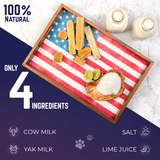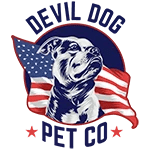Key Takeaways
- Elk burgers are a lean and protein-rich alternative to traditional beef burgers.
- They provide bold flavor while containing less fat than conventional beef.
- Ground elk meat offers a cleaner and more sustainable protein option.
- Choosing elk aligns with responsible eating and supports American-sourced products.
Table of Contents
- Why Elk Burgers Belong on Your Table, Not Just On The Range
- Elk vs. Beef, Bison, and Venison: Choosing Your Burger Protein Like a Leader
- Field to Freezer: Sourcing Elk Meat With Patriot-Level Ethics
- Elk Burger Nutrition, Fuel for the Mission, Not Just a Meal
- Understanding Elk's Unique Flavor, A Bold Step Beyond Beef
- The Art and Science of Mixing Juicy Elk Burger Patties
- Forming, Chilling, and Preparing Elk Burger Patties for Maximum Juiciness
- Cooking Elk Burgers: Grill and Stovetop, Step-by-Step Like a USMC Range Instructor
- Building the Ultimate Elk Burger, Toppings, Buns, and Next-Level Combos
Why Elk Burgers Belong on Your Table, Not Just On The Range
An elk burger is a lean, protein-packed wild game sandwich that delivers bold flavor without the excess fat of conventional beef. Made from ground elk meat, these burgers offer a cleaner, more sustainable protein choice that aligns with responsible eating and American-sourced values.
For dog owners who appreciate the benefits of elk, Extra Large (XL) Whole Elk Antler Official Dog Chew provides a natural and durable chew that complements your commitment to quality nutrition. If you have a smaller dog, consider the Extra Small Whole Elk Antlers Dog Chew for a perfectly sized option.
Elk burgers represent more than just another protein option, they're a statement of intentional food choices. With 22% more protein than beef and significantly less saturated fat, elk meat provides the nutritional density active owners and veterans demand. The mild, slightly sweet flavor profile challenges conventional burger thinking while supporting ethical hunting practices and North American wildlife management.
Elk Burger Nutritional Quick Facts (Per 4oz Cooked Patty)
- Protein: 30g (vs. 25g in beef)
- Total Fat: 3g (vs. 15g in 80/20 beef)
- Calories: 145 (vs. 287 in beef)
- Omega-3: 4x higher than conventional beef
Download the FREE 10-Step Dog Prep Guide
Elk vs. Beef, Bison, and Venison: Choosing Your Burger Protein Like a Leader

Selecting the right burger protein requires evaluating nutrition, flavor, sustainability, and availability. Each option serves different priorities, from maximum protein density to familiar taste profiles.
If you're interested in exploring more about elk antler options for your dog, check out the Large Whole Elk Antler Official Dog Chew for a robust and long-lasting chew.
| Protein Type | Protein (4oz) | Total Fat | Omega-3 (mg) | Flavor Profile | Sustainability Impact |
|---|---|---|---|---|---|
| Elk | 30g | 3g | 138 | Mild, slightly sweet | Wild-harvested, minimal footprint |
| Ground Beef (80/20) | 25g | 15g | 35 | Rich, familiar | High resource usage |
| Bison | 28g | 7g | 84 | Robust, earthy | Grass-fed, regenerative |
| Venison | 26g | 2g | 105 | Gamey, variable | Wild-harvested, regional |
Three actionable selection criteria: First, prioritize protein-to-fat ratio if supporting active lifestyles or weight management. Second, verify sourcing transparency, ask suppliers about harvest location, processing facilities, and handling protocols. Third, start with elk or bison if transitioning from beef, as both offer familiar textures with superior nutrition profiles.
Field to Freezer: Sourcing Elk Meat With Patriot-Level Ethics
Ethical elk sourcing demands transparency in harvest methods, processing standards, and supply chain accountability. Premium elk meat comes from wild North American herds managed through regulated hunting programs that support conservation efforts.
For a deeper dive into the nutritional and ethical aspects of elk meat, read our comprehensive guide on elk meat.
Questions to ask your elk vendor:
- Where was this elk harvested? (Specific state/region)
- What processing facility handled the meat?
- How long from harvest to freezer?
- Are you USDA-inspected or state-certified?
- Do you support veteran-owned operations?
Red flags include vague origin stories, prices significantly below market rate ($12-18/lb for ground elk), and reluctance to provide processing documentation. The North American elk meat market generates over $50 million annually, with veteran-owned businesses comprising roughly 15% of direct-to-consumer suppliers.
| Source Type | Price Range (per lb) | Traceability | Delivery Speed | Minimum Order |
|---|---|---|---|---|
| Direct Ranch | $14-16 | Complete harvest records | 2-3 weeks | 10-20 lbs |
| Online Retailer | $16-20 | Basic certification | 3-7 days | 1-5 lbs |
Elk Burger Nutrition, Fuel for the Mission, Not Just a Meal
A 4oz cooked elk burger patty delivers 145 calories, 30g protein, and 3g fat, creating an ideal macronutrient profile for sustained energy without the blood sugar crashes associated with higher-fat proteins. The lean composition supports muscle recovery and metabolic function, particularly valuable for active dog owners and veterans maintaining demanding physical routines.
The B-vitamin complex in elk meat, particularly B12, niacin, and riboflavin, supports neurological function and energy metabolism. A single 4-ounce elk burger delivers approximately 2.4 mcg of B12 (100% daily value), crucial for cognitive sharpness and red blood cell formation. The selenium content (22 mcg per serving) provides antioxidant protection, while iron levels exceed those found in conventional beef by roughly 15%.
Elk Burger Nutrition vs. 85/15 Ground Beef (Per 4oz Cooked Patty)
- Elk: 166 calories, 34g protein, 3g fat, 2.4mcg B12, 22mcg selenium
- Ground Beef: 283 calories, 28g protein, 19g fat, 2.6mcg B12, 18mcg selenium
- Advantage Elk: 41% fewer calories, 21% more protein, 84% less fat
For families managing weight goals or blood sugar concerns, elk's lean profile prevents the post-meal energy crashes common with higher-fat proteins. The clean macronutrient ratio supports sustained satiety without the inflammatory load associated with grain-fed beef.
Understanding Elk's Unique Flavor, A Bold Step Beyond Beef

Elk delivers a distinctly sweet, rich flavor that's cleaner and less gamey than venison, with none of the mineral aftertaste some associate with wild game. The meat carries subtle earthy notes, think grass-fed beef with a hint of wild herbs, creating a more complex flavor profile than conventional grain-fed cattle.
Regional diet variations affect taste significantly. Rocky Mountain elk, feeding on alpine grasses and browse, produce sweeter meat than their plains counterparts. Farm-raised elk tends toward milder flavors due to consistent grain supplementation, while truly wild-harvested elk offers the most pronounced character.
Common complaints about "gamey" or "dry" elk typically stem from poor handling or overcooking rather than inherent meat quality. Elk that's been stressed during harvest, improperly field-dressed, or aged too long develops the metallic, overly strong flavors that turn newcomers away. Quality elk should taste clean and slightly sweet, if it doesn't, question the source.
If you're curious about the differences between deer and elk antlers for dogs, you can find a comprehensive comparison in our article on deer antler vs elk antler for dogs.
Elk vs. Bison Flavor: Elk is noticeably sweeter and more delicate than bison, which carries a stronger, more robust "red meat" flavor. Bison sits closer to beef on the flavor spectrum, while elk occupies its own category between beef and venison.
The Art and Science of Mixing Juicy Elk Burger Patties
Handling Elk, Preventing Dry, Crumbly Patties From the Start
Elk's ultra-lean composition (roughly 2% fat compared to beef's 15-20%) requires different handling techniques to prevent dry, crumbly results. The low fat content means less natural binding, so overworking the meat breaks down protein structures that hold moisture and create texture.
Keep elk meat cold throughout the mixing process, ideally 35-38°F. Warm meat loses moisture rapidly and becomes sticky, making proper texture impossible. Handle the ground elk minimally, mixing just until seasonings distribute evenly. The moment you feel the mixture becoming tacky or paste-like, stop immediately.
Adding Fat for Juiciness, What, How Much, and Why
Adding 15-20% fat by weight transforms lean elk into juicy, cohesive patties. Beef tallow provides the cleanest flavor enhancement, while bacon adds smokiness. For every pound of ground elk, incorporate 2.5-3 ounces of fat using a gentle folding motion rather than aggressive mixing.
Grass-fed butter or ghee works excellently for smaller batches, roughly 2 tablespoons per half-pound of elk. Some hunters save brisket trimmings specifically for elk burger mixing, creating an 80/20 ratio that mimics premium ground beef texture while maintaining elk's distinctive flavor.
Ingredient List: Balancing Seasoning vs. Overpowering Elk's Flavor
Elk's delicate flavor requires restraint with seasonings. Per pound of meat, use 1 teaspoon kosher salt, ½ teaspoon fresh-ground black pepper, ½ teaspoon garlic powder, and 1 tablespoon Worcestershire sauce. This base enhances without masking elk's natural sweetness.
| Seasoning Blend | Flavor Profile | Best Pairings |
|---|---|---|
| Classic (salt, pepper, garlic) | Clean, lets elk shine | Sharp cheddar, caramelized onions |
| Southwest (cumin, chili powder, lime) | Warm spice, citrus brightness | Pepper jack, avocado, jalapeños |
| Smoky (smoked paprika, onion powder) | Campfire depth | Bacon, mushrooms, bourbon sauce |
Forming, Chilling, and Preparing Elk Burger Patties for Maximum Juiciness
Step-by-Step Patty Prep
Form elk burgers into ¾-inch thick patties, slightly larger than your bun diameter to account for cooking shrinkage. Use a light touch, gentle pressing with cupped palms rather than aggressive squashing. The goal is cohesion without compacting the meat into a dense hockey puck.
Create a shallow indent in the center of each patty using your thumb. This prevents the classic "burger dome" that occurs when proteins contract during cooking, ensuring even thickness and consistent doneness throughout.
Chill formed patties for 15-30 minutes before cooking. Cold fat solidifies, creating better structure and preventing the patty from falling apart on the grill. This step also allows seasonings to penetrate the meat while the proteins firm up naturally.
Advanced Patty Tips
Mix fat additions while ingredients are cold, room temperature fat smears rather than distributes, creating uneven texture and potential weak spots. Keep a bowl of ice water nearby to cool your hands between patties if working with larger batches.
For maximum flavor integration, season the meat 30 minutes before forming patties, then chill the formed patties for another 15 minutes. This double-rest method allows salt to penetrate while maintaining proper texture.
Juiciness Insurance: Best Practices vs. Common Pitfalls
- Best Practice: Light handling, cold ingredients, proper fat ratio
- Pitfall: Over-mixing, warm meat, skipping the chill step
- Quick Fix: If patties feel dense, gently re-form with ice-cold hands
For dogs that need a tough, long-lasting chew, the MONSTER Whole Elk Antler Dog Chew is an excellent choice for power chewers.
Cooking Elk Burgers: Grill and Stovetop, Step-by-Step Like a USMC Range Instructor

Pre-heat, Oil, and Temperature: How To Start Right
Preheat your grill to medium-high heat (400-450°F) or heat a cast-iron skillet over medium-high stovetop heat. Oil the grates or pan surface, not the patties, to prevent sticking without adding unnecessary calories. Avocado oil or ghee work best for high-heat cooking without smoking.
For charcoal grilling, create a two-zone setup with hot coals on one side for searing and cooler areas for finishing. Gas grills should maintain consistent medium-high heat across the cooking surface.
Exact Timings and Temperatures
Elk burgers require precise timing due to their lean composition. Cook 3-4 minutes per side for medium-rare (130-135°F internal temperature), or 4-5 minutes per side for medium (135-145°F). Never cook elk burgers beyond 145°F, the lack of fat means well-done elk becomes dry and tough regardless of preparation quality.
Use visual cues alongside temperature: properly cooked elk develops a rich brown crust while maintaining slight give when pressed gently. The center should feel firm but not hard, similar to the flesh between your thumb and forefinger when making an "OK" sign.
Troubleshooting Common Problems
If burgers stick to the grill, they're not ready to flip, properly seared elk releases naturally. Resist the urge to force movement. For dry exteriors with undercooked centers, reduce heat and extend cooking time rather than increasing temperature.
Rest cooked elk burgers for 3-5 minutes before serving. This allows juices to redistribute throughout the meat, preventing them from running out when you take the first bite. Cover loosely with foil to maintain warmth without continuing to cook.
Apartment Cooking Solution: A cast-iron skillet on medium-high heat produces results nearly identical to grilling. The key is proper preheating and avoiding overcrowding if cooking multiple patties.
For more information on elk hunting regulations and conservation, visit the Colorado Parks & Wildlife elk hunting page.
Building the Ultimate Elk Burger, Toppings, Buns, and Next-Level Combos
Top Toppings by Flavor Profile
Sharp cheddar and aged goat cheese complement elk's sweetness without overpowering its delicate flavor. Sautéed wild mushrooms, shiitake, oyster, or chanterelle, enhance the earthy notes naturally present in elk meat. For heat lovers, thinly sliced jalapeños or a dash of chipotle provide warmth without masking the primary flavors.
Arugula offers peppery contrast while red onion adds sharpness and crunch. Avoid heavy sauces that compete with elk's natural character, instead, choose condiments that enhance: whole-grain mustard, horseradish aioli, or a bourbon-based sauce.
For a variety of elk antler chews suitable for every dog size, browse our full selection of elk antlers.
To learn more about the benefits of jumbo split elk antler chews for power chewers, check out our article on jumbo split elk antler chews for power chewers.
| Style | Cheese | Vegetables | Sauce |
|---|---|---|---|
| Classic | Sharp Cheddar | Lettuce, Tomato, Red Onion | Dijon Mustard |
| Wild | Aged Goat Cheese | Sautéed Mushrooms, Arugula | Horseradish Aioli |
| Southwest | Pepper Jack | Avocado, Jalapeños | Chipotle Mayo |
| Patriot | American Cheese | Pickles, Onion | Bourbon BBQ Sauce |
Download the FREE 10-Step Dog Prep Guide
Frequently Asked Questions
What are the nutritional benefits of elk burgers compared to traditional beef burgers?
Elk burgers offer higher protein content, about 30g per 4oz cooked patty versus 25g in beef, while containing significantly less fat, roughly 3g compared to 15g in 80/20 beef. They also provide fewer calories and boast four times more omega-3 fatty acids, making them a leaner, nutrient-dense choice for active dog owners and veterans alike.
How does the flavor of elk meat differ from beef, bison, and venison when used in burgers?
Elk meat has a mild, slightly sweet flavor that stands apart from the richer, gamier notes of venison and the earthier taste of bison. Compared to beef, elk offers a bolder but cleaner profile that challenges conventional burger expectations without overpowering the palate.
What should consumers look for to ensure ethically and sustainably sourced elk meat?
Look for elk meat sourced from responsible North American wildlife management and ethical hunting practices. Prioritize products that transparently trace their origin, support sustainable populations, and align with American-sourced values to back both quality and conservation.
What are the best practices for preparing and cooking elk burgers to maximize juiciness and flavor?
Mix elk meat with a small amount of added fat, season simply, and form patties gently to avoid overworking the meat. Chill the patties before cooking and aim for medium-rare doneness on the grill or stovetop to lock in moisture and deliver a juicy, flavorful burger every time.






